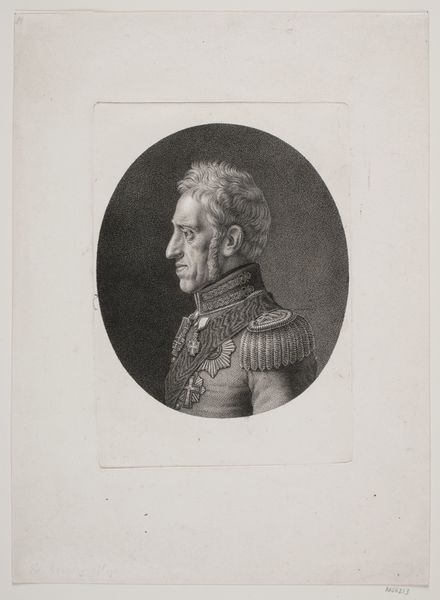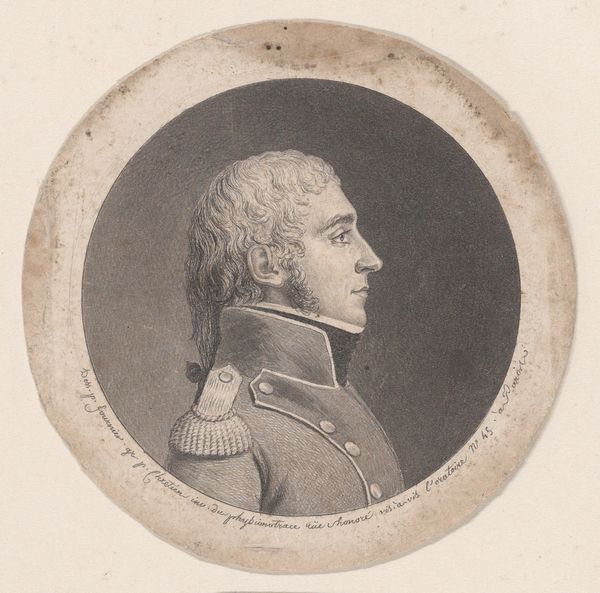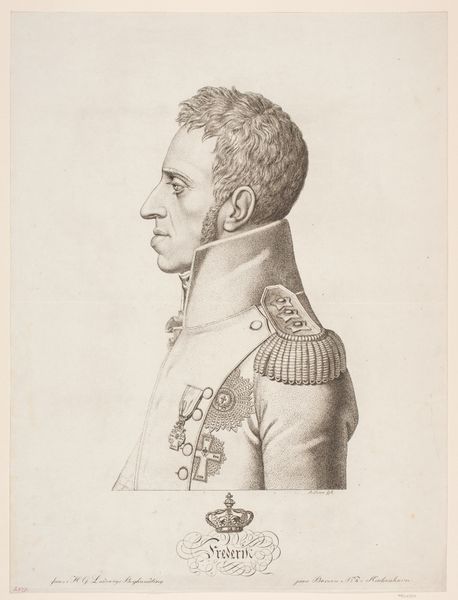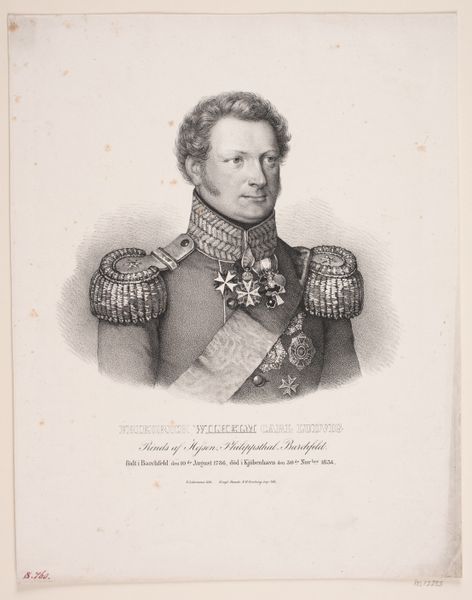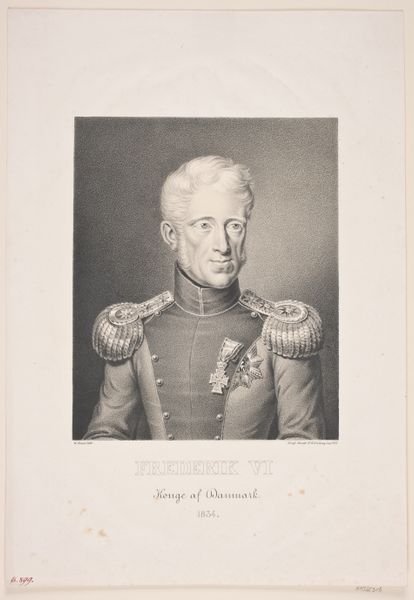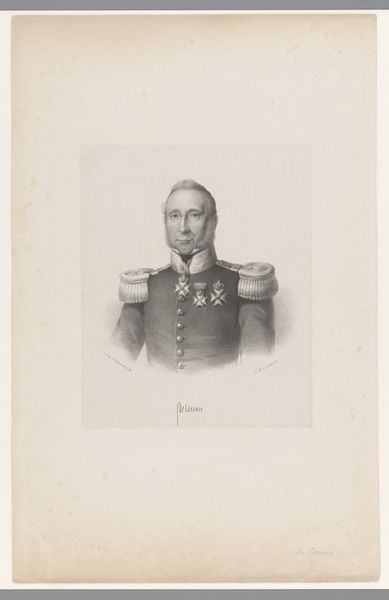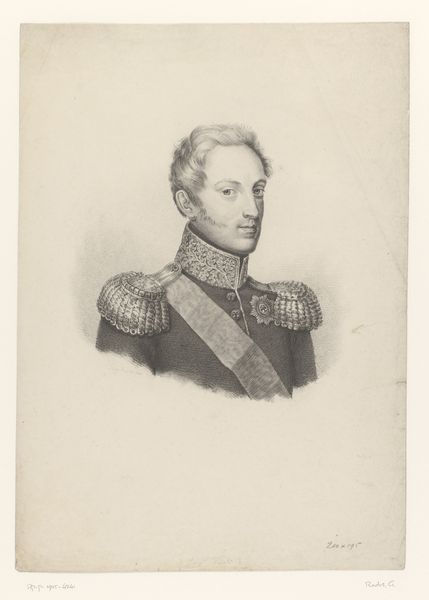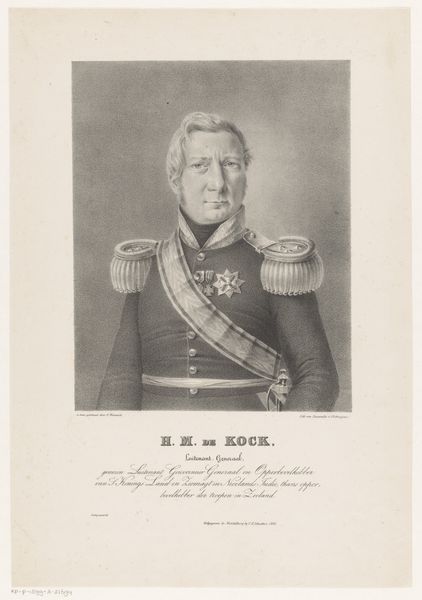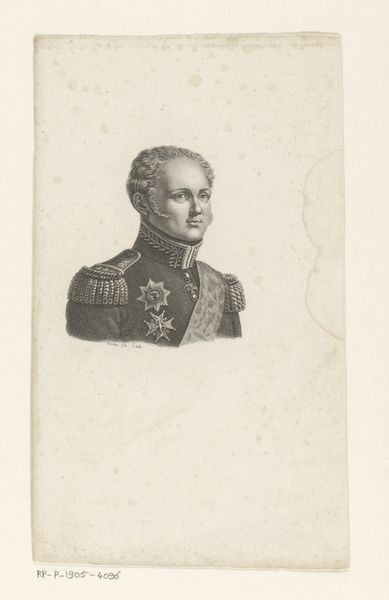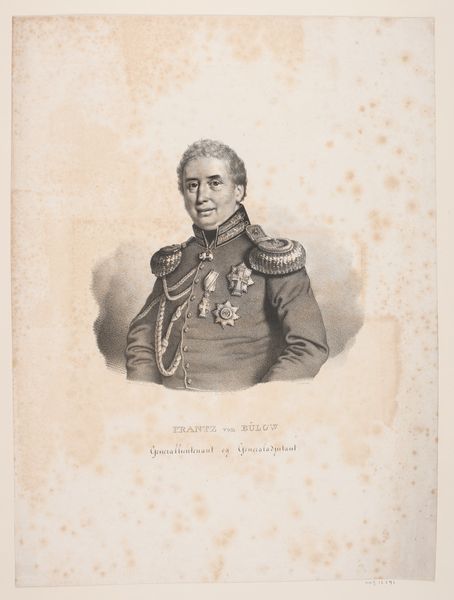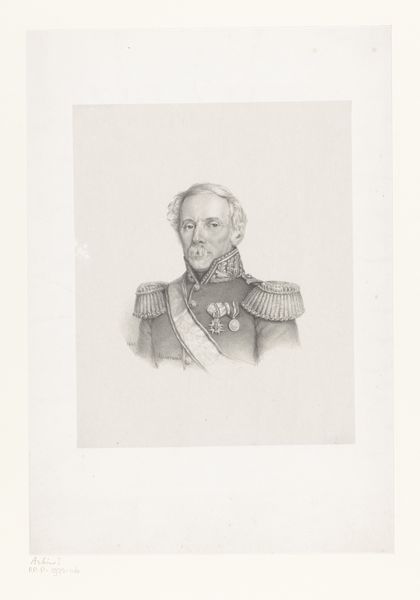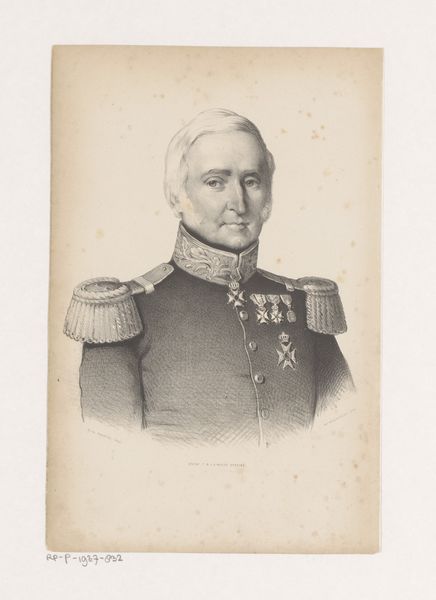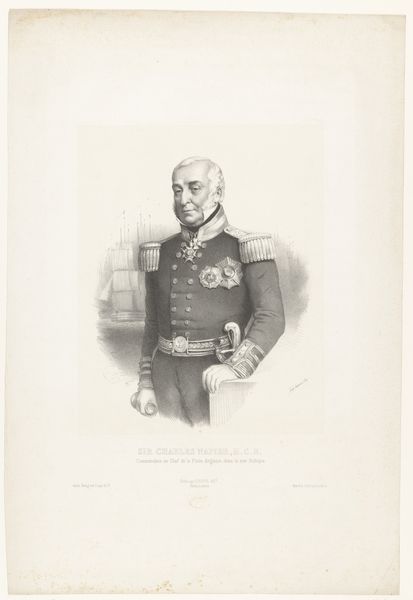
lithograph, print
#
portrait
#
16_19th-century
#
lithograph
# print
#
caricature
#
charcoal drawing
#
pencil drawing
#
romanticism
#
history-painting
Dimensions: 432 mm (height) x 320 mm (width) (bladmaal)
Editor: Here we have Vilhelm Kyhn's lithograph of Frederik VI, made sometime between 1821 and 1838. It's currently held at the SMK. It’s fascinating how the artist was able to create such detail using lithography. What is particularly interesting to you about it? Curator: It’s a fascinating example of how lithography democratized portraiture. Prior to this, portraits of the elite were largely the domain of painting, accessible only to the wealthy. The means of production matter here. Lithography allowed for relatively inexpensive reproduction and distribution, making images of the King, like this one, accessible to a broader audience. Editor: So you're saying the technique used changed who could see and consume art? Curator: Precisely. Think about the stone itself. It’s not inherently valuable like gold or ivory, but the labor invested in preparing the stone, creating the image, and printing—that is where value is generated. Kyhn's technical skill is also on display here; consider how the material qualities, ink on paper, create an image of authority. How does the contrast and detail function, not just aesthetically, but also ideologically? Editor: I hadn’t considered how the material accessibility connects with the depiction of power. Were these prints widely circulated? Curator: That’s the key question. Were they used as propaganda? Were they sold to generate revenue? Investigating the print runs and distribution networks would reveal a lot about the relationship between the monarchy and its subjects at this time. We can also discuss how printmaking has a tradition rooted in craftsmanship and consider the social class of this process compared to painting. Editor: That's fascinating. I hadn't thought about the socioeconomic implications of lithography and printmaking. Thanks for the insight. Curator: Likewise! It's helpful to be reminded how closely technique, labor, and consumption intersect.
Comments
No comments
Be the first to comment and join the conversation on the ultimate creative platform.
